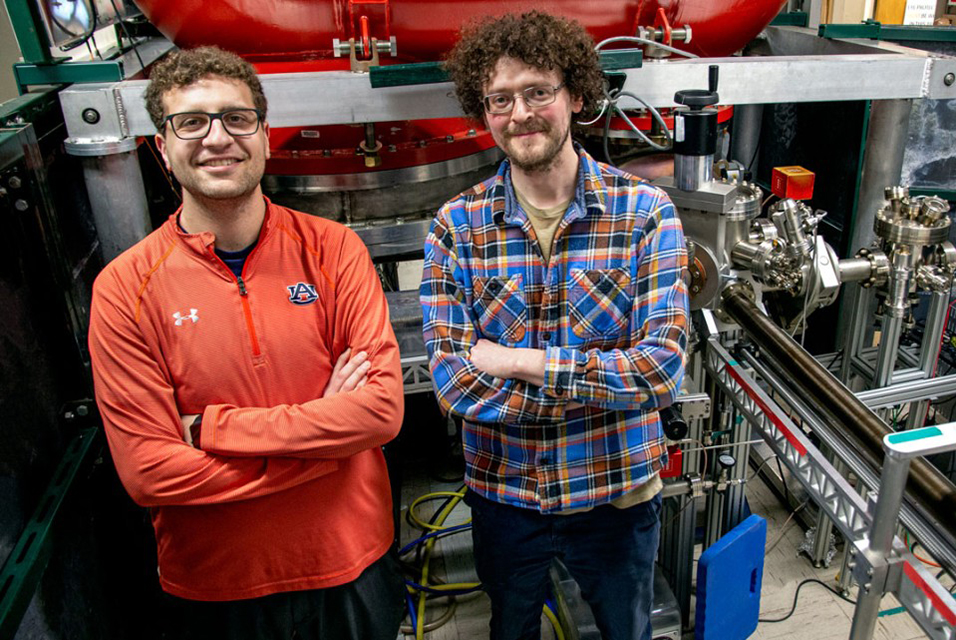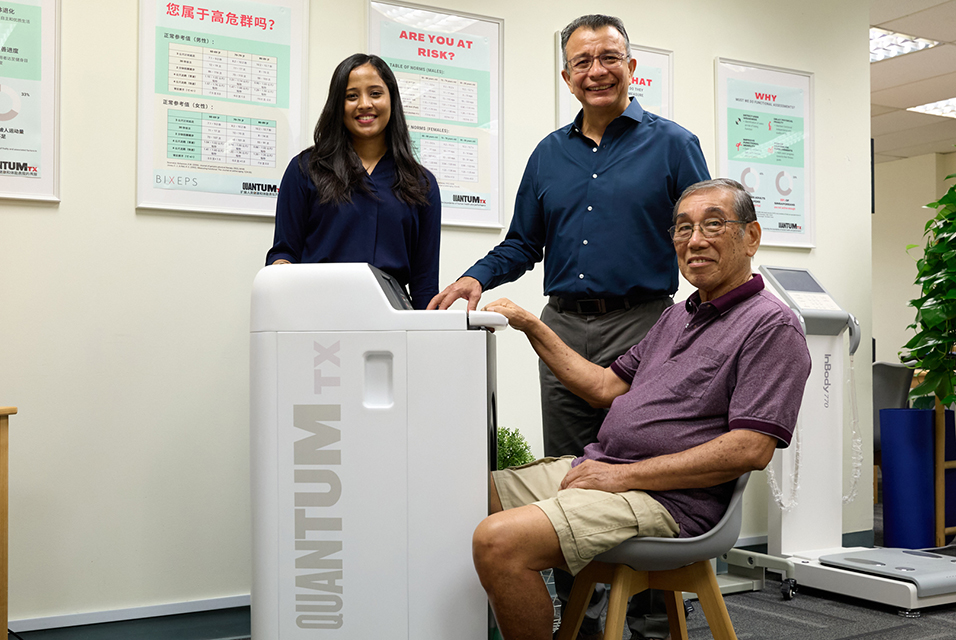ITHACA, NY.- Cornell is breaking new ground in electron beam research with the HERACLES beamline, a state-of-the-art electron gun that mimics the harsh environments of the world’s largest particle colliders.
Originally designed during the university’s Energy Recovery Linear Accelerator program, the electron gun at the heart of HERACLES (the High ElectRon Average Current for Lifetime ExperimentS) allows researchers at Newman Laboratory to study cathodes that can be used in everything from semiconductor manufacturing to the proposed electron-ion collider.
Accelerator technology relies on photocathodes to produce high-current electron beams for a variety of applications. For example, a robust photocathode can sustain a high-current electron beam in particle colliders, where one of the most important criteria is beam luminosity (the number of particle collisions produced). A higher beam current yields a larger luminosity, which could accelerate new physics discoveries.
However, the efficiency of the photocathode is sensitive to the vacuum environment inside the accelerator, and can degrade rapidly at high current.
“The inside of an electron gun is a harsh environment,” said Matt Andorf, research associate at CLASSE (the Cornell Laboratory for Accelerator-based ScienceS and Education). “So, our photocathodes do not necessarily fail – it’s that we ask a lot of them under extreme conditions.”
Similar to beamlines at large colliders, HERACLES is constantly maintained in ultra-high vacuum. Despite this, remaining residual gas can chemically react with the cathode, degrading its efficiency and damaging the material.
Researchers at Cornell study these photocathodes by re-creating a harsh particle-collider environment within HERACLES, while trying to minimize degrading effects, such as chemical poisoning and ion back-bombardment.
Leading this charge are CLASSE researchers and graduate students, who have built HERACLES to improve the strength of photocathodes developed for high-current beam operation.
“Now that photocathodes are getting better, we can use them in these very brutal industrial environments,” said Jared Maxson, Ph.D. ’15, assistant professor of physics in the College of Arts and Sciences (A&S), who’s leading this effort along with Ivan Bazarov, professor of physics (A&S).
One such environment, Maxson said, is the proposed electron-ion collider to be built at Brookhaven National Lab. This large collider will search for quarks and gluons, the particles that form the protons and neutrons in visible matter.
“We are testing the electron sources that are going into these machines, in exactly the same conditions in which they will be used – for nuclear physics or for high-energy physics,” Maxson said.
While HERACLES is primarily used for fundamental research, the knowledge gained from these experiments has the potential to impact a range of real-world applications. For example, electron accelerators are used in medical facilities to generate X-rays for imaging and radiotherapy. Electron beams can also be used in semiconductor manufacturing, where the CHIPS Act has spurred additional investment and energy into this sector.
Researchers will use HERACLES to advance high-current photocathodes by rapidly testing their performance from growth chamber to high-current demonstration. This research is expected to lead to reliable advances in robust, high-current cathode technology.
However, the greatest strength of HERACLES, Maxson said, is not necessarily its power, but the involvement of students – every step of the way.
“Students get to operate this thing,” he said. “Graduate students are the ones to put the beam down the pipe and collect the data. Students truly are the scientific drivers of HERACLES.”
Sam Levenson is one of those drivers. The fourth-year doctoral student prepares, grows and tests the photocathodes for HERACLES.
“Science-wise, it is really impactful to test the cathodes in the same environment as these large colliders,” Levenson said. “We learn a lot about cathode robustness this way, without the constraints associated with larger facilities.”
This work was supported by the U.S. Department of Energy and the National Science Foundation through the Center for Bright Beams.










